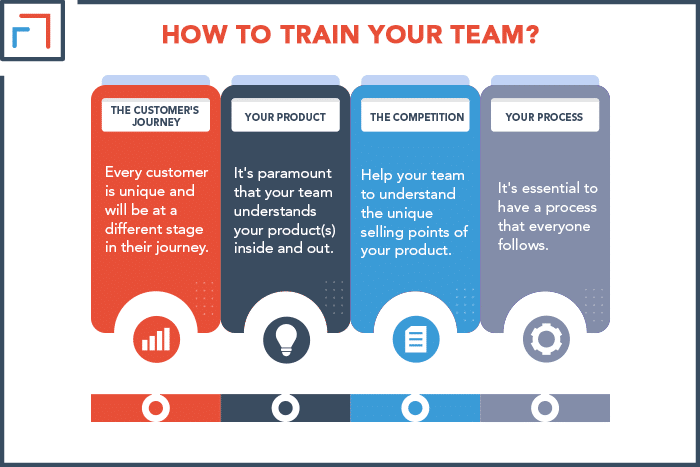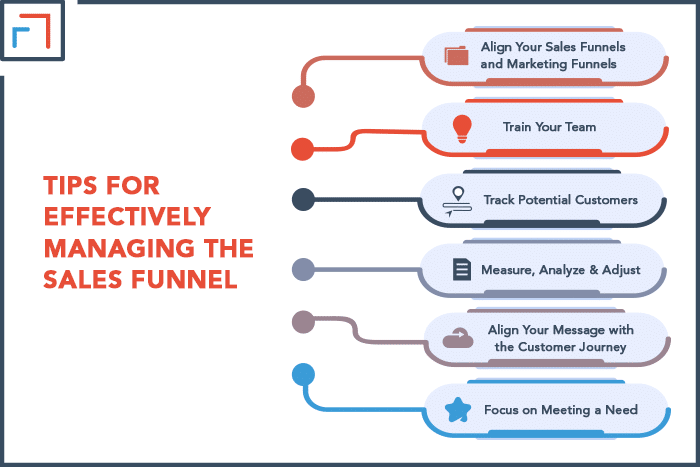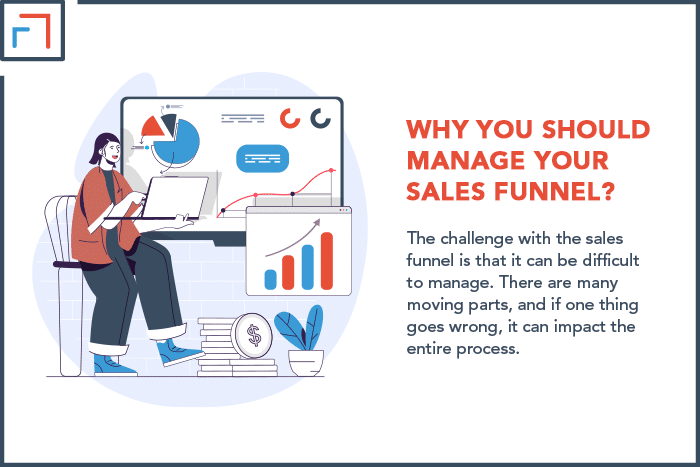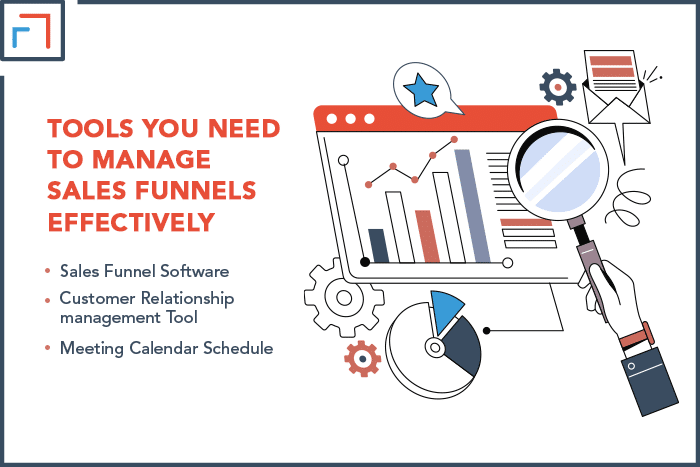Most businesses have a sales funnel, whether they realize it or not. The goal of this system is to move potential customers through steps to build relationships and close a deal. Managing these funnels is essential because it helps you refine your strategy and be more successful.
To manage a sales funnel, you should align it with your marketing funnel, train your team, and track potential customers. Then you need to measure, analyze, and adjust the funnel. It’s also advisable to meet a need and minimize friction in your sales process by tracking the customer journey.
Let’s take a more in-depth look at funnel management. This article will help you learn the importance of managing the sales funnel and discuss some of the tools you need to be successful.
Sales Funnel Management
Sales funnel management is the process of ensuring that your sales process runs smoothly. By this, you can avoid losing prospects and improve your marketing efforts.
Let’s look at the tips for effectively managing the sales funnel.
1. Align Your Sales Funnels and Marketing Funnels
Most people use the terms “sales funnel” and “marketing funnel” interchangeably. However, they are two different things.
Your marketing funnel is the process you use to generate leads, while your sales funnel is the process you use to convert those leads into customers.
It’s important to align the two because they work together to create a seamless customer experience. If they’re not aligned, you risk losing potential customers.
To align your sales and marketing funnels, start by mapping out the steps in your customer’s journey.
Then, ensure that each step in the sales process matches with a corresponding action in marketing.
For example, if you’re using content marketing to generate leads, you should have a plan in place for how you’re going to turn those leads into customers.
That said, the sales and marketing teams need to be on the same page.
Communication is key to ensuring that both teams work together towards the same goal.
The marketing team nurtures the lead, and the sales team closes the deal. Engaging your sales mode too soon can scare prospects away.
2. Train Your Team
Training is not the easiest thing to do. Everyone has different strengths and weaknesses, and it can take time to get everyone on the same level.
It’s essential to invest in the team’s development, even if it means going through some growing pains.
When training your team, you may want to focus on the following things:
- The customer’s journey: Every customer is unique and will be at a different stage in their journey. It’s essential to understand where they are in the process so you can appropriately tailor your approach.
- Your product: It’s paramount that your team understands your product(s) inside and out. They should be able to answer any questions that a potential customer might have.
- The competition: Understanding your competition is crucial when it comes to selling against them. Help your team to understand the unique selling points of your product.
- Your process: Every salesperson has their own style, but it’s essential to have a process that everyone follows. This will help to ensure consistency and prevent confusion.

3. Track Potential Customers
It’s easy to get confused and lost in the sea of online information. If you’re not careful, potential customers can slip through the cracks and be lost forever.
To avoid this, it’s important to track your leads. There are a few ways to do this:
- Lead scoring: This tactic involves assigning a score to each lead based on their likelihood of converting. The methodology helps you to focus your attention on the most promising leads.
- Lead tracking: Keeping track of your interactions with each lead is an essential part of the process. This includes phone calls, emails, and meetings.
- Opportunity tracking: An essential aspect of sales is spotting an opportunity when you see it. This includes factors such as the size of the deal and the likelihood of winning.
Keeping close tabs on potential customers will help to minimize friction in your sales process.
Consequently, you’ll have a greater chance of closing more deals.
4. Measure, Analyze & Adjust
The sales process is constantly evolving. What works today might not work tomorrow.
That’s why it’s essential to measure, analyze, and adjust your sales funnel regularly. The key metrics that you should be tracking are:
- Conversion rate
- Time on each stage
- Lead velocity
- Cost per lead
- Customer lifetime value
- Opportunity count in each stage
4.1 Conversion Rate
In every marketing effort, the goal is to have a higher conversion rate. The average sales funnel conversion rate is between 2-5% for most industries.
If you’re not happy with your current conversion rate, it’s time to take a closer look at your process.
There are a few things that you can do to improve your conversion rate:
- Segment your audience: The more targeted your message is, the better your conversion rate will be.
- Test your offer: Ensure that your offer is compelling and relevant to your audience.
- Simplify the process: The easier it is for prospects to convert, the higher your conversion rate is.
- Improve your website: Your website or landing pages should be designed with conversion in mind. Ensure that the user experience is positive and that the forms are easy to fill out.
The metric helps you understand the effectiveness of your sales process.
4.2 Time on Each Stage
How long each deal spends in each sales funnel stage is an important metric to track. Of course, the average time will vary depending on your industry.
However, if you find that deals are spending too long in a particular stage, it could indicate a problem. You can improve your sales process in the following ways:
- Eliminate bottlenecks: If deals are spending too long in a particular stage, it could indicate a problem. Try to identify and eliminate any hurdles in the process.
- Shorten the sales cycle: The shorter the sales cycle, the better. If you can find ways to shorten the time that deals spend in each stage, you’ll be in a good position.
- Increase efficiency: There are always ways to improve the efficiency of your sales process. This could involve automating certain tasks or using technology to speed things up.
4.3 Lead Velocity
It’s essential to know the number of prospects moving through your sales funnel.
If you find that the number of prospects is decreasing, it could suggest there are issues with your process.
In addition to the number of leads, quality also matters. You want to ensure that the leads moving through the funnel are high quality and likely to convert.
In most cases, the best way to increase lead velocity is by improving your marketing efforts. The metric is an indicator of potential revenue.
4.4 Cost Per Lead
The cost per lead is the amount of money you spend on marketing and advertising divided by the number of leads you generate.
This metric is important because it helps you understand the ROI of your marketing strategies.
If you find that your cost per lead is too high, you need to rethink your approach.
4.5 Customer Lifetime Value
How much revenue does each customer generate throughout their relationship with your company? This is a metric you should track.
In some instances, the cost per lead may be high, but if the customer lifetime value is also high, it may be worth it.
You can afford to spend more money on marketing if you know that the customer lifetime value is high.
4.6 Opportunity Count in Each Stage
The number of opportunities in each stage of the sales funnel gives you an idea of how your process is working.
It could signify a lapse in your approach if you find too many opportunities in the early stages and not enough in the later stages.
Ideally, you want a healthy mix of opportunities throughout the sales funnel. Each phase should have a reasonable number of prospects.
The opportunity count is an important metric to track because it helps you understand where your process may be breaking down.
5. Align Your Message with the Customer Journey
If you want to close more sales, you should align your message with the customer journey. You can’t just start selling as soon as you meet a prospect.
You need to take the time to understand their needs and pain points. Only then can you formulate a message that resonates with them.
A sales funnel has four main stages:
- Awareness
- Interest
- Decision
- Action
In the awareness stage, your goal is to make potential customers aware of your product or service.
You can do this through marketing campaigns, social media, and content marketing.
When the customer gains interest, you should pique their curiosity with a compelling offer. This is where you start to introduce them to your product or service.
The decision stage is where the customer decides whether or not to buy your product or service.
This is where you provide them with all the information they need to make a decision.
Finally, the customer takes action and buys your product or service in the last stage.
You should nurture prospects throughout the entire sales funnel to ensure they don’t drop off.
By aligning your message with the customer journey, you can create a more seamless and effective sales process.
6. Focus on Meeting a Need
There is no way a prospect will buy your product or service if they don’t see a need for it.
You should focus on meeting the needs of your potential customers. This means understanding their pain points and crafting a solution that meets those needs.
If you can do this, you’ll be well on your way to closing more sales. Needs could be surface-level things such as wanting a cheaper product.
On the other hand, there could be deeper emotional needs, such as wanting to feel more secure.
You must understand your prospects’ pain points and craft a solution that meets those needs. By doing this, you’ll close more sales and grow your business.

Why You Should Manage Your Sales Funnel?
The challenge with the sales funnel is that it can be difficult to manage. There are many moving parts, and if one thing goes wrong, it can impact the entire process.
Why should any business care about managing its sales funnel?
1. Avoid Losing Prospects along the Journey
I once had a hiking experience where I lost the trail and needed my phone’s GPS to find my way back. Without this guide, I might have gotten lost for days!
The same thing is true for your prospects. If you don’t manage your sales funnel effectively, you will lose potential customers along the journey.
It’s important to have a system to keep track of prospects and follow up with them.
Each action or inaction has a corresponding reaction that affects the sales process.
If you take too long to follow up with a prospect, they may forget about you or move on to someone else.
On the other hand, you may seem pushy or desperate if you reach out too soon.
You must find the right balance to keep your prospects engaged throughout the entire process.
2. Know the Right Approach to Take
Unless you’re a mind reader, you won’t know what your prospects are thinking.
That’s why it’s crucial to have a system that will help you manage your sales funnel effectively. The best way to do this is to use sales funnel software.
These tools help you track your prospects, follow up with them, and measure your results.
It’s important to find software that fits your needs to take the guesswork out of managing your sales funnel.
3. Improve Marketing Decisions
As a marketer, you’re always looking for ways to improve your campaigns. One way to do this is by using sales funnel data.
This information helps you understand what’s working and what’s not.
You can use the data to make better marketing decisions that will lead to more sales.
For example, if you see that a certain type of content is not performing well, you can adjust your strategy and try something different.

Tools You Need to Manage Sales Funnels Effectively
Just like a plumber can’t do their job without the proper tools, you can’t effectively manage your sales funnel without the right tools.
There are a few types of tools you need to be successful.
1. Sales Funnel Software
Designing, editing, and managing your sales funnel can be daunting. But with the right software, it can be much easier.
Sales funnel builders help you design and edit your sales funnel to make the most of your time.
They also allow you to track your results to see what’s working and what’s not.
2. Customer Relationship Management Tool
Customer relationship management (CRM) is essential for any business that wants to manage a sales funnel.
A CRM tool helps you keep track of your prospects and customers.
It also automates tasks so you can focus on selling. Consequently, you can increase the results of your marketing strategies.
3. Meeting Calendar Schedule
Time is a precious commodity. That’s why it’s important to have a meeting calendar schedule.
This tool helps you plan and schedule your meetings to make the most of your time.
Many businesses fall short when it comes to time management. But with a meeting calendar schedule, you can be more organized and productive.

Key Takeaways
Effectiveness in sales funnel management can mean the difference between a successful business and one that struggles.
When sales and marketing are out of alignment, it results in lost prospects and customers. Therefore, you should align the two for maximum effect.
It’s also essential to have the right tools to manage your sales funnel.
Sales funnel software, customer relationship management tools, and meeting schedules are a few essential tools.
Now it’s time to go and implement these strategies in your business!
